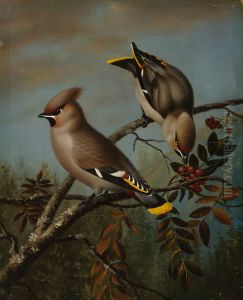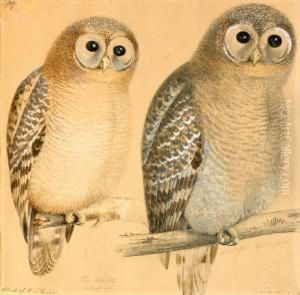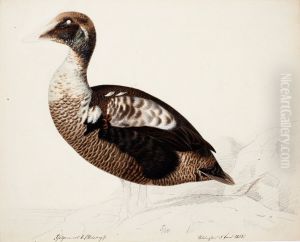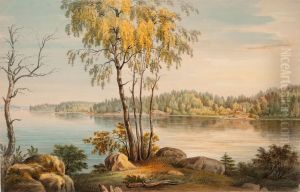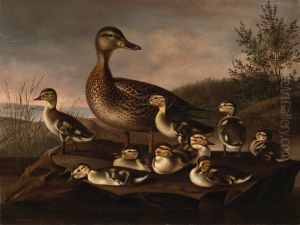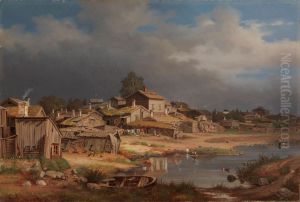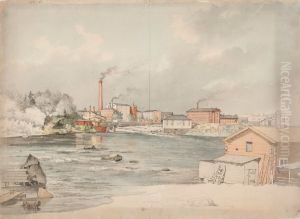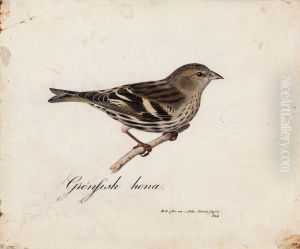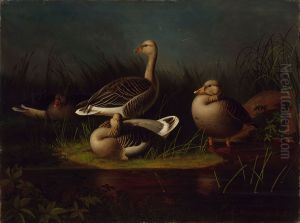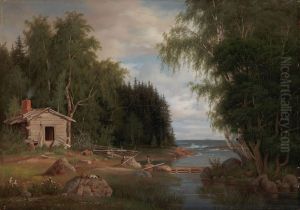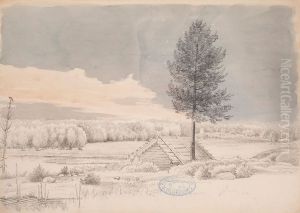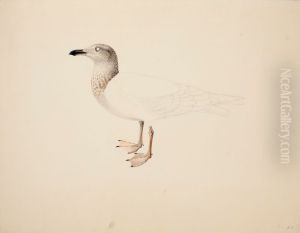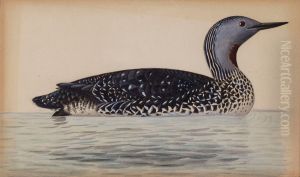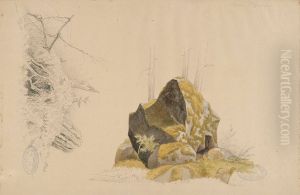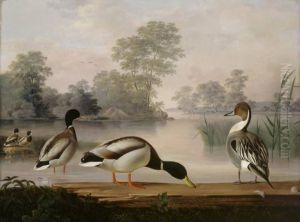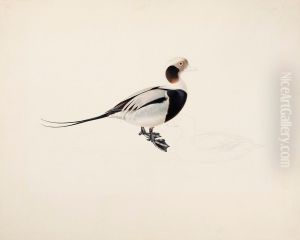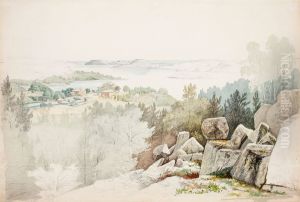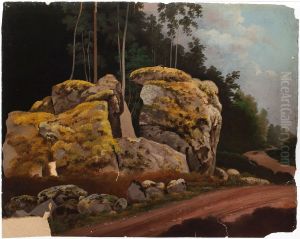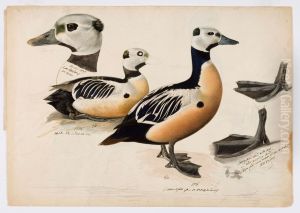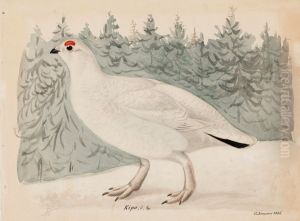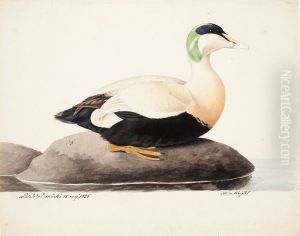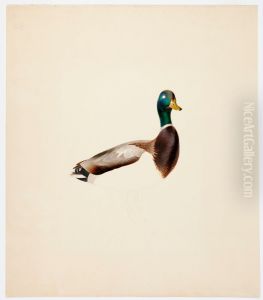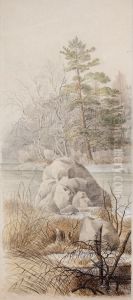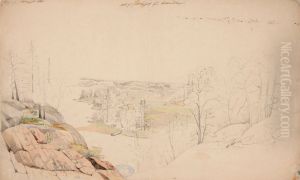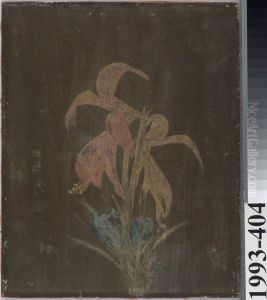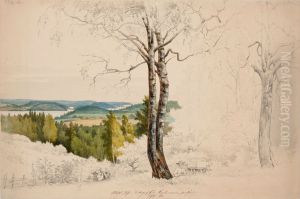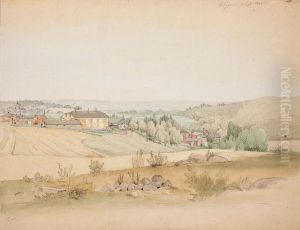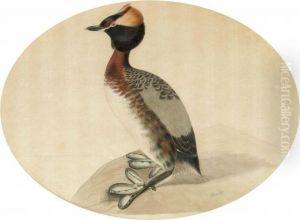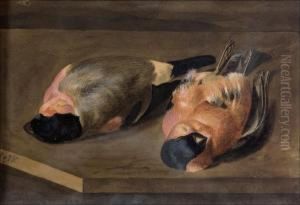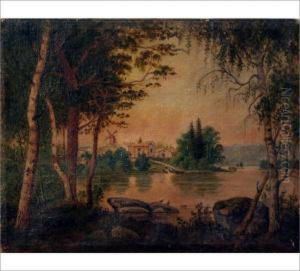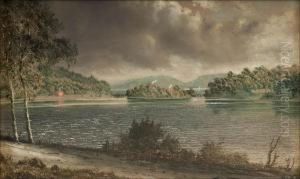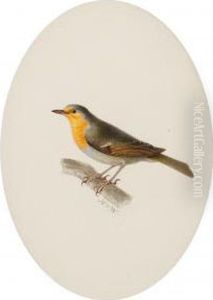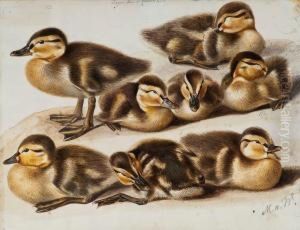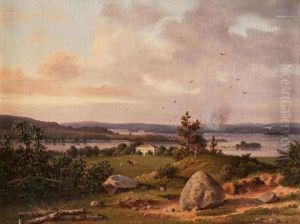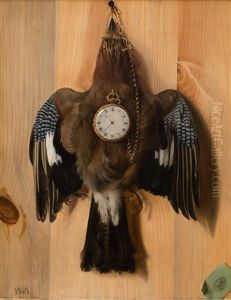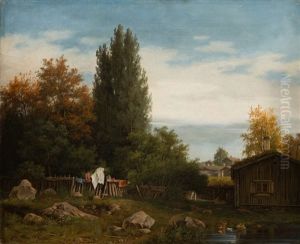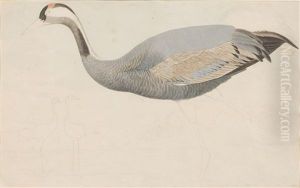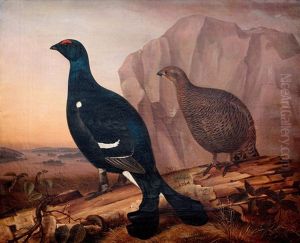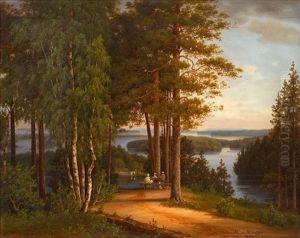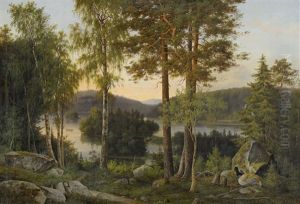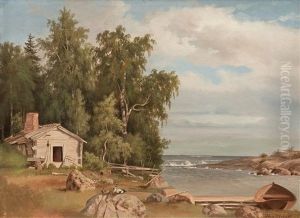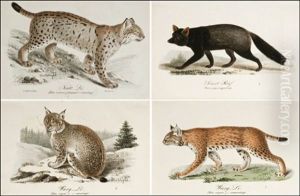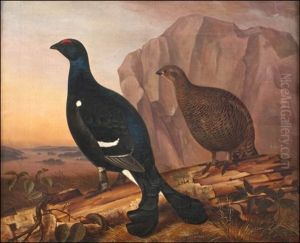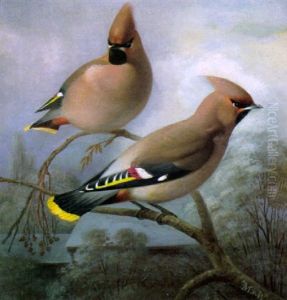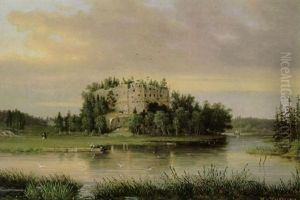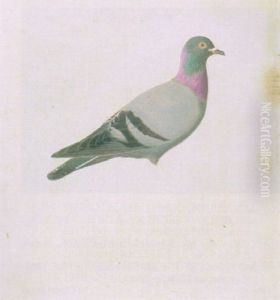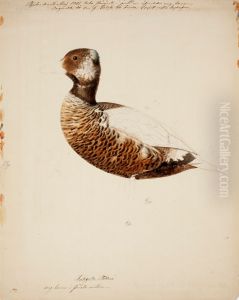Magnus Von Wright Paintings
Magnus von Wright was a notable figure in 19th-century Finnish art, remembered primarily for his contributions as a painter, draftsman, and ornithologist. Born on June 13, 1805, in Haminalahti, Finland, he was part of the von Wright family, a lineage that played a significant role in the cultural and scientific spheres of Finland during that era. His brothers, Wilhelm and Ferdinand, were also distinguished artists and natural scientists, making the von Wright brothers collectively prominent in the Finnish art scene.
Magnus's interest in nature, particularly in birds, was evident from an early age. This passion not only influenced his artistic endeavors but also led him to significant contributions in the field of ornithology. His artistic style was characterized by meticulous attention to detail and a commitment to portraying his subjects with scientific accuracy, which was particularly evident in his bird paintings.
Throughout his career, Magnus von Wright produced a vast number of watercolors, drawings, and oil paintings, many of which focused on landscapes, still lifes, and, most notably, birds. His work on 'Svenska Foglar' (Swedish Birds), which he illustrated alongside his brother Wilhelm, is a testament to his skill and dedication to ornithological illustration. This work was highly regarded for its artistic merit and scientific accuracy, contributing valuable knowledge to the field of ornithology in Scandinavia.
In addition to his work as an artist and scientist, Magnus von Wright held the position of curator at the Finnish Society of Sciences and Letters, where he was able to further influence the scientific community. Despite his significant contributions and the respect he garnered in his lifetime, Magnus von Wright was not widely known outside of Scandinavia until after his death.
Magnus von Wright passed away on July 5, 1868, leaving behind a legacy that has been increasingly recognized and celebrated. His works are preserved in various museums and collections, serving as a bridge between art and science and as a testament to his passion for the natural world and his skill as an artist. Today, Magnus von Wright is celebrated not only for his artistic achievements but also for his contributions to the natural sciences, making him a multifaceted figure of the 19th century.
